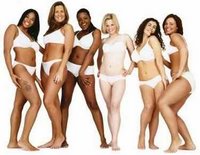
Popularized by Wilson Key in his book Subliminal Seduction, people are under the impression that subliminal content, images and words meant to be motivating but undetectable at the conscious level, continues to be pervasive in American advertising.
According to a recent survey, 87% of respondents think that subliminal advertising exists in today’s marketplace. Stephen Floyd and Katie Walsh, two honors students at the University of Georgia, discovered this finding when they asked 97 people their beliefs about subliminal advertising. In terms of prevalence, older adults (26+) say that 58% of all advertising contains subliminal content compared to younger people (48%). When asked what products are most likely to be advertised with subliminal content, 12 products were identified including: food, clothing, alcohol, tobacco, cars, beauty products, and jewelry. Floyd and Walsh believe that their findings identify a credibility challenge faced by advertisers, even if it is a “perceived” offense.
To gain some insight on sexual images that you can see, visit the blog Sex in Advertising or website SexinAdvertising.com.



